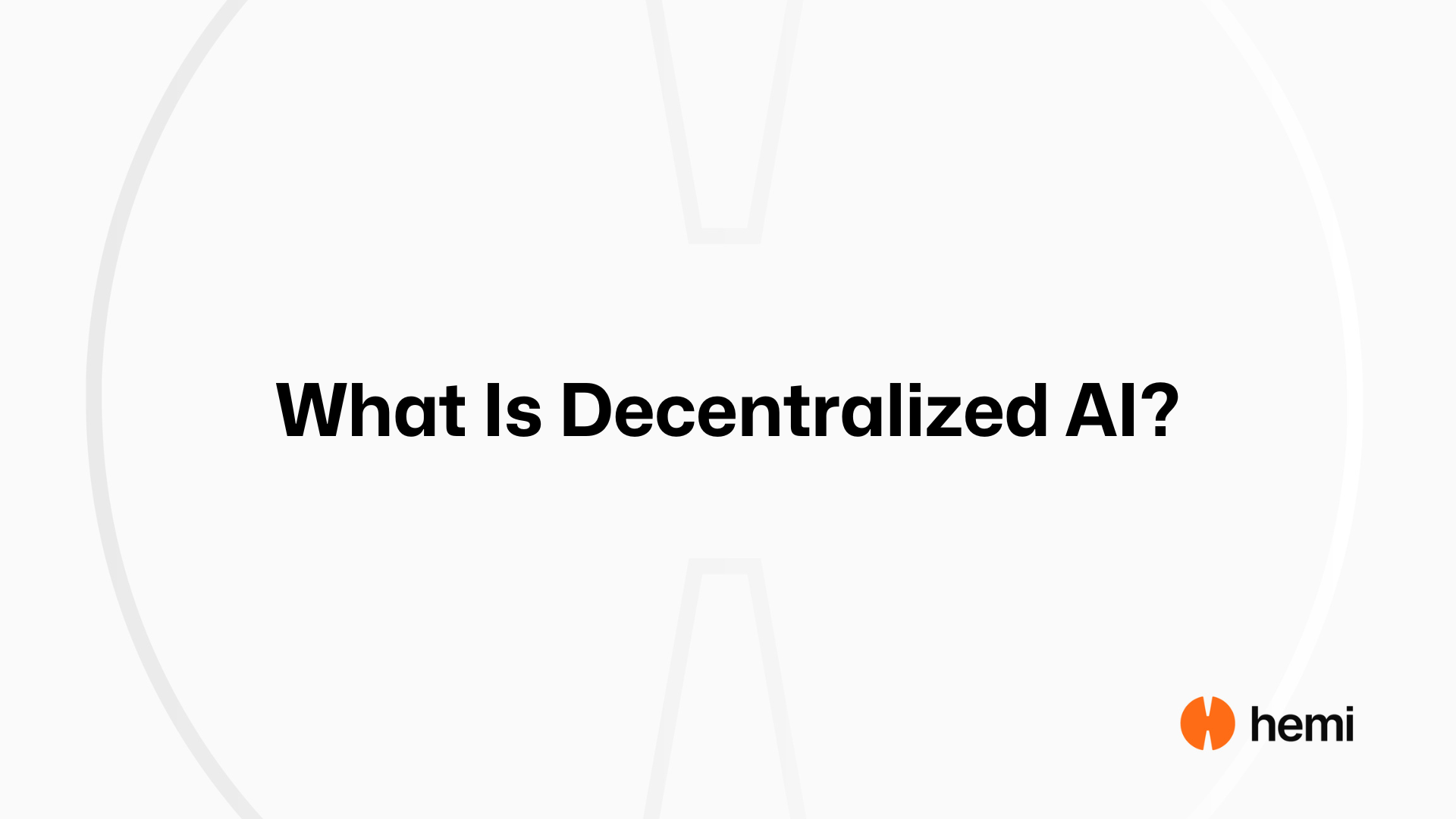- AI
- Bitcoin
- Ethereum
- Hemi
- Learn Center
- April 3, 2025
What Is Decentralized AI?
Decentralized AI or DeAI is a way for LLM models and other machine learning tools to interact with decentralized blockchains in a way that prevents centralized ownership and control.

Artificial intelligence is becoming a core component of the internet. As large language models, autonomous agents, and algorithmic systems gain ground, the question is no longer whether AI will be part of the digital economy—but who will control it, how it will be accessed, and whether it will remain open. Decentralized AI is a direct response to that question, and Hemi is building infrastructure that supports its practical use on-chain.
What Is Decentralized AI?
Decentralized AI refers to artificial intelligence that operates across decentralized system rather than being controlled by a single platform. In traditional settings, large AI models are built, hosted, and served by single entities—usually tech companies with the resources to handle the scale (OpenAI and Google, for example.) This creates control bottlenecks, limits access, and introduces risks related to censorship, opacity, and economic gatekeeping.
A decentralized approach breaks that model. It spreads computation, access, and governance across a network. Models can be run by independent nodes. Data can be stored on distributed networks. Decisions about upgrades, monetization, or usage can be made collectively, rather than dictated by a single firm. It’s a way to keep AI systems permissionless, open, and composable.
Where Hemi Fits In
Hemi is a Bitcoin-secured, Ethereum-aligned protocol that supports low-cost, modular, and developer-friendly infrastructure. Hemi is well-positioned to support AI out of the gate. There are three reasons for that.
First, modularity. Hemi enables developers to build or plug into execution environments that fit their needs. This is ideal for AI systems, which often require custom logic, event-driven execution, or resource-optimized environments.
Second, interoperability. AI systems aren’t isolated. They consume data, trigger actions, and make decisions that touch many parts of the stack. Hemi’s ability to interact with Bitcoin and Ethereum ecosystems—and soon other chains—means that on-chain AI agents aren’t locked in. They can hold assets, call contracts, and move value across networks.
Third, cost and scalability. AI agents can be chatty. Whether they’re executing trades, making DAO proposals, or submitting compute requests, they generate on-chain activity. Hemi’s low-latency and low-fee design makes this sustainable, even for high-frequency agent systems.
There are already signs of decentralized AI emerging on Hemi. Tools like Truth Terminal, an LLM-based agent created by developer Andey Ayrey, have demonstrated the ability of on-chain AI to interact with users and execute DeFi strategies autonomously. These agents aren’t just bots—they’re programmable economic actors that can access liquidity, reason about actions, and adapt in real time.
Looking Ahead
The development of decentralized AI is still early. Key problems—model hosting, shared memory, fine-tuned incentives—are being worked out. But the infrastructure is forming. Hemi offers a strong base layer for AI systems that need to operate in public, shared environments. It aligns with the goals of decentralized AI: permissionless access, programmable logic, open composability, and cross-chain reach.
As more developers experiment with LLMs, agent systems, and decision automation, decentralized networks will need to step up. Hemi is already in that position. And as the next generation of AI moves from labs to public chains, Hemi may be one of the places where it learns to think.